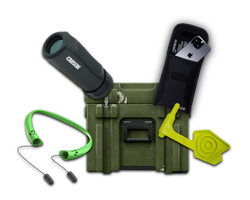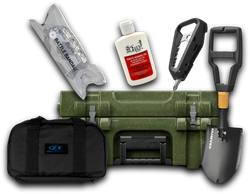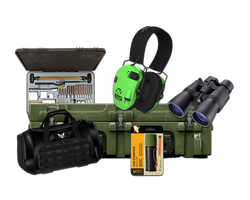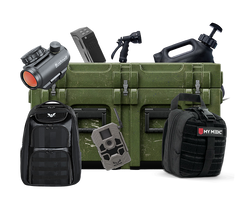
Procuring water in a cold environment | Tips from a Survival Instructor
People worry about dying of dehydration in the desert and rarely think about dying of thirst when surrounded by frozen water. However getting water efficiently is paramount in an arctic/winter setting. As you dehydrate in the cold your blood becomes thicker and the circulation rate slows leaving you incredibly vulnerable to cold injuries such as hypothermia and frostbite. In this article, I’ll go over a couple of things that I’ve done and that I teach to ensure that you can procure yourself some safe drinking water.
Water generator. It’s a simple enough device. Find something that is permeable to water and that can hold a good amount of snow. I typically use sections from a parachute as I’m teaching downed pilots how to survive. Hang the parachute up so that there is a pouch that you can fill with snow. Have a fire going near it so that the heat melts the snow in the pouch. Have a stick placed into the pouch to create a point for all of the water to collect at, and below that, a bucket to collect that water. It won’t taste great but it’ll get you through some tough situations.
Melting ice. Simple enough, ice will yield far more water than snow will due to the density of the ice. Melt it in canteen cups or equivalent and enjoy yourself some quality H20. If you find yourself in a location where the snow meets the shoreline or you find yourself rummaging for drinkable water in the ocean around the arctic circle make sure you stick to ice that has a deep blue color as it will be (mostly) free of salt.
Streams, Rivers, Ponds. Remove your gloves (so that they don’t get wet and your fingers don’t freeze solid) and get yourself some water. Be wary of falling through the ice or slipping off of the snowy bank into freezing water. To avoid getting a ton of debris in your water as you fill it hold your canteen cup or other water collection container 90 degrees to the flow of the stream. It’ll minimize the stuff that gets in there.
One of my favorite methods is to melt snow / ice in my canteen while on the move. While your canteen is partially full, add small amounts of snow or ice as you travel. The water in your canteen will melt it so long as the temperature is somewhat regulated (In an insulated cover, or in one of your layers if you must). It’s a simple method that can easily be done in colt environments and is a go to for me.
A couple more cold weather water tips for you. Store your water containers upside down. Water freezes from the top down. This will help to ensure that your cap doesn’t freeze solid onto your canteen. Do not sleep with your water in your sleeping bag, if it bursts open or leaks you’re likely to have a very bad time. I like to place my canteens underneath my bough bed by my feet. Usually the heat radiating off my sleeping bag coupled with the insulation from the boughs will keep the water from freezing. Alternatively, you can bury your water containers upside down in 2-3 feet of snow. The snow will insulate the containers enough so that they do not freeze solid. Also, purify your water.
As with any environment you need to hydrate. I see far more hydration issues during cold weather than I do during warm weather. Take care of yourselves, worry about water and not food. Avoid protein to save your water, ration sweat not water and be safe out there. *Originally published on the Loadout Room
Share this article







